Children’s Book Week was established in the in the second decade of the 20th century by a visionary group of librarians, booksellers, and publishers. Franklin K. Matthews, librarian of the Boy Scouts of America, approached Frederic G. Melcher, editor of Publishers Weekly and Anne Carroll Moore, Superintendent of Children’s Works at the New York Public Library. With their support, a Good Book Week was organized in 1916, sponsored by the American Booksellers Association, the American Library Association, and the Boy Scouts of America. Since 2008, the celebration has taken place the first full week of May and is administered by the non-profit Every Child a Reader. Events take place across the United States, including here in Michigan.
The audience for children’s literature goes far beyond ages 2-12. The words and images of these books linger in our minds long after we’ve outgrown the suggested age ranges. Often, they are favorite memories of childhood and even profound influences on our path through life. And, of course, parents, older siblings, and extended family treasure the opportunity to introduce children to old favorites and discover new ones.
Below are a few favorite children’s books from the staff of the Special Collections Library, featuring titles present in our Children’s Literature Collection. Celebrate Children’s Book Week with one of these suggestions, or share your own best-loved books in the comments!
The Monster at the End of this Book, written by Jon Stone, illustrated by Michael Smollin. [PS 3569 .T64175 M667 1971]
“I adored this book as a child. I loved the interactive experience of reading it, with Grover desperately imploring the reader to not turn each page, and the suspense leading up to the surprise twist at the end!”
- Evyn Kropf, Librarian for Near Eastern and Religious Studies; Curator, Islamic Manuscripts Collection
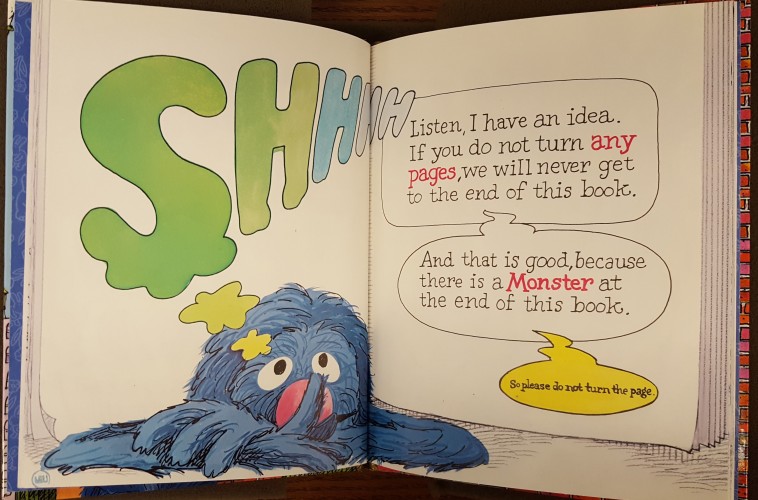
Stone, Jon. The Monster at the End of this Book. Racine, Wis. : Western Pub. Co., 1971. Children's Literature Collection.
Gift of William A. Gosling.
The Ice-Cream Cone Coot and Other Rare Birds, written and illustrated by Arnold Lobel. [PS 3562 .O18 I34 1971]
“This has long been my favorite Lobel book, but I don't think it's nearly as well known as his others. I love his illustrations and all of the alliteration he uses. It's just silly fun that introduces kids to new words.”
- Anne Elias, Collection Services Specialist

Lobel, Arnold. The Ice-Cream Cone Coot and Other Rare Birds. Children's Literature Collection. New York: Parents' Magazine Press, 1971.
Walp Family Juvenile Collection.
Farewell to Shady Glade, written and illustrated by Bill Peet. [PS 3566 .E37 F37 1966]
"I kept reading [this book] over and over...compelled by the portrayals of tragedy and perseverance in the face of what I would now call environmental injustices. I definitely remember wanting to fight pollution and deforestation after reading these books - as I still want to do, today! "
- Kate Hutchens, Reader and Reference Services Librarian
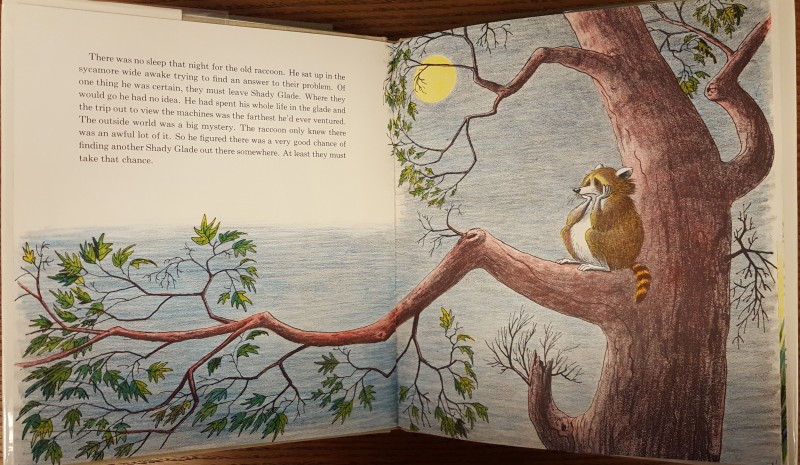
Peet, Bill. Farewell to Shady Glade. Boston, MA: Houghton Mifflin, 1966. Walp Family Juvenile Collection.
Each Peach Pear Plum: An “I Spy” Story, written and illustrated by Janet and Allan Ahlberg. [PR 6051 .H57 E33 1980]
"I remember checking this book out from my Elementary School Library over and over again. I loved searching for the fairy tale characters hidden behind cupboards and in the branches of trees."
-Juli McLoone, Outreach Librarian & Curator

Ahlberg, Janet and Allan. Each Peach Pear Plum: An “I Spy” Story. London : Fontana, 1980. Children's Literature Collection,
Janice Dohm Collection.
A Teeny Tiny Baby, written and illustrated by Amy Schwartz [PS 3569 .C56635 T44 1994]
"In this story an infant describes his needs and pleasures. Parents and children alike easily relate to the gentle humor that characterizes this story about having -- and being -- a baby."
-Martha O’Hara Conway, Director, Special Collections Library
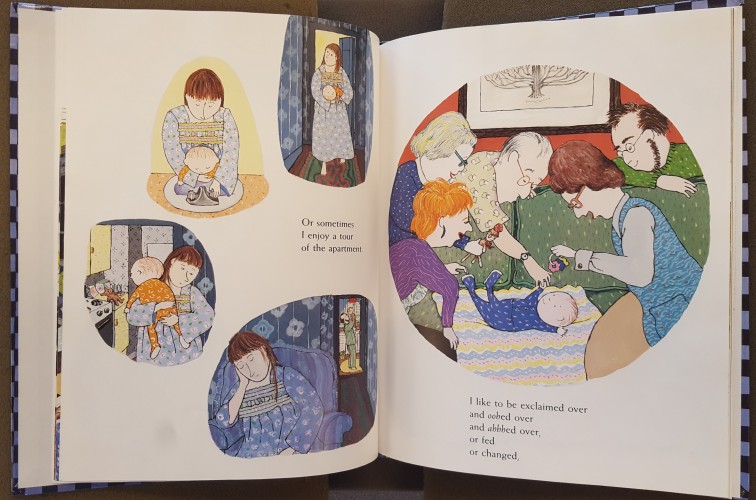
Schwartz, Amy. A Tiny Tiny Baby. New York: Orchard Books, 1994. Walp Family Juvenile Collection.
Paddington Abroad, written by Michael Bond, illustrated by Peggy Fortnum. [PR 6052 .O588 P322 1972]
"The Paddington Bear books are the probably the first chapter books that I read. My dad also loved them and would often read them aloud to me. Paddington’s adventures - full of silly misunderstandings and mistakes - are very accessible to young children fumbling their way through a world of inexplicable grown-up rules."
-Juli McLoone, Outreach Librarian & Curator
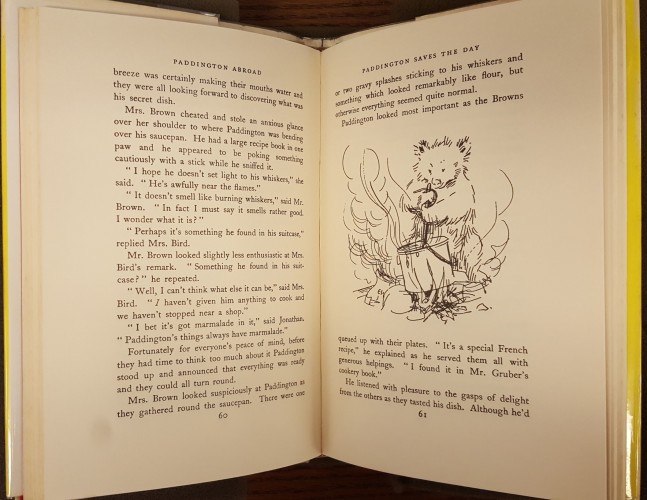
Bond, Michael. Paddington Abroad. Boston : Houghton Mifflin, 1972. Children's Literature Collection. Gift of William A. Gosling.
Pippi Longstocking, written by Astrid Lindgren, illustrated by Lauren Child and translated by Tina Nunnally. [PT 9875 .L56 P56 2007]
"I love Pippi Longstocking's attitude towards life. She was full of fun and never answered to anyone. She didn't care what people thought of her and just followed her heart. She rarely did anything she didn't want to do, including go to school. Pippi never felt bad about herself, or at least not for very long. She was a perfectly well-adjusted human being. I always wanted to be like her. "
- Julie Herrada, Curator, Joseph A. Labadie Collection
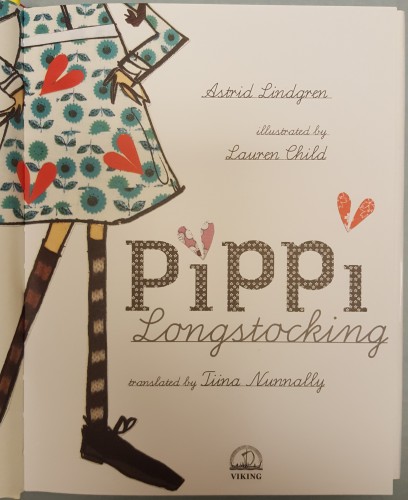
Lindgren, Astrid. Tina Nunnally, trans. Pippi Longstocking. New York : Viking Children's Books, 2007. Children's Literature Collection.
From the Mixed-up Files of Mrs. Basil E. Frankweiler, written and illustrated by E. L. Konigsburg. [PS 3561 .O534 F76 1967]
“I loved how resourceful 12-year-old Claudia is and the takeaway of being ‘different on the inside, where it counts.’ And of course, the whole idea of infiltrating the Metropolitan Museum of Art, sleeping in Amy Robsart's bed and taking a bath in the Fountain of Muses. When I finally made it to the Met, as an adult, I was terribly disappointed neither are still on display. ”
-Jen Talley, Original Cataloger
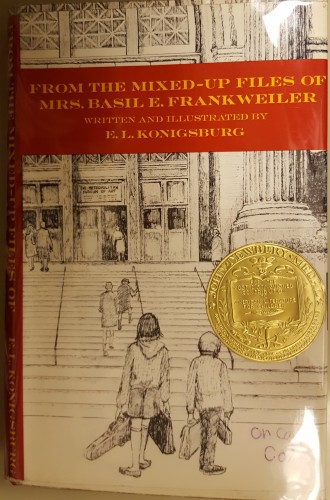
Konigsburg, E. L. From the Mixed-up Files of Mrs. Basil E. Frankweiler. New York, Atheneum, 1967. Walp Family Juvenile Collection
The Little House Books: A Pioneer Chronicle, written by Laura Ingalls Wilder, illustrated by Garth Williams [PS 3545 .I342 A15 1971]
“I loved Laura's descriptions of clothing and food as well as the harshness of frontier life. She made her childhood and early adulthood come alive and also made it accessible to modern readers.”
- Anne Elias, Collection Services Specialist
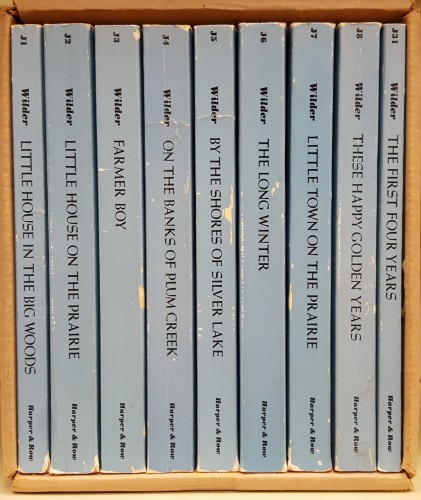
Wilder, Laura Ingalls. The Little House Books: A Pioneer Chronicle. New York : Harper & Row, 1971. Children's Literature Collection.
Maniac Magee: A Novel , written by Jerry Spinelli. [PS 3569 .P87 M36 1990]
"Maniac Magee stood larger-than-life in my childhood imagination, as did he in the stories and legends of the fictional town of Two Mills. His freedom, cleverness, and astounding athletic abilities represented everything I wished I could be as a gawky, sheltered girl from the sticks. The dark themes of homelessness and racism which ran throughout the story made me see Maniac as all the more heroic for his (at times simplistic) transcendence of boundaries."
- Karmen Beecroft, Collection Services Specialist

Spinelli, Jerry. Maniac Magee. Boston : Little, Brown, 1990. Walp Family Juvenile Collection.